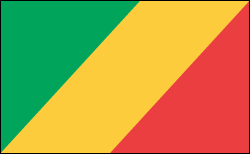Congo, Republic of History


Congo's First Free Elections Are a Model for Sub-Saharan Africa
In July 1990, the leaders of the ruling party voted to end the one-party system. A national political conference, hailed as a model for sub-Saharan Africa, renounced Marxism in 1991 and scheduled the country's first free elections for 1992. Pascal Lissouba became the country's first democratically elected president.
Political and ethnic tensions intensified in 1993 after legislative elections, when the opposition's rejection of the results developed into violence. A peace agreement was signed between the government and the opposition in Aug. 1994. A four-month civil war (June 5–Oct. 15, 1997) devastated Brazzaville, the capital. Buttressed by military aid from Angola, former Marxist dictator Denis Sassou-Nguesso overthrew President Lissouba. In late 1999 a peace agreement was signed between Sassou-Nguesso, who comes from the north, and the rebels representing the populous south. The postwar period has been traumatic for the desperately poor country.
In March 2002, President Sassou-Nguesso was reelected with 89.4% of the vote. His opponents were either barred from the country or withdrew from the election.
The so-called Ninja rebels continued to battle government forces, each attempting to gain or maintain control of the country's rich oil reserves and each seemingly unconcerned about the toll this new outbreak of violence took on civilians. In May 2003, the government and Ninja rebels signed an agreement to end hostilities.
Sassou-Nguesso was reelected to another 7-year term in July 2009. The opposition boycotted the election.
See also Encyclopedia: Congo .
U.S. State Dept. Country Notes: Congo (Brazzaville)







